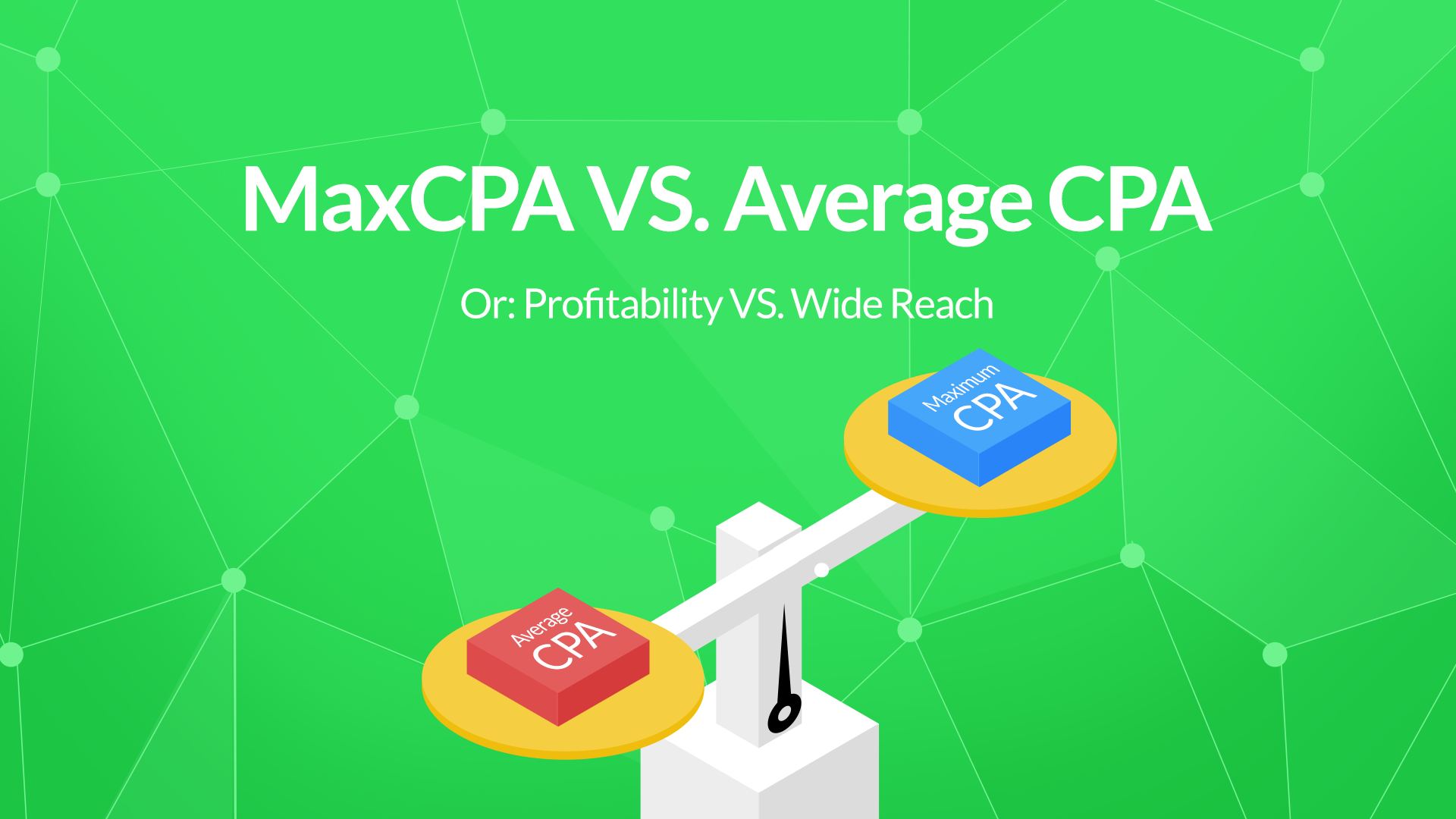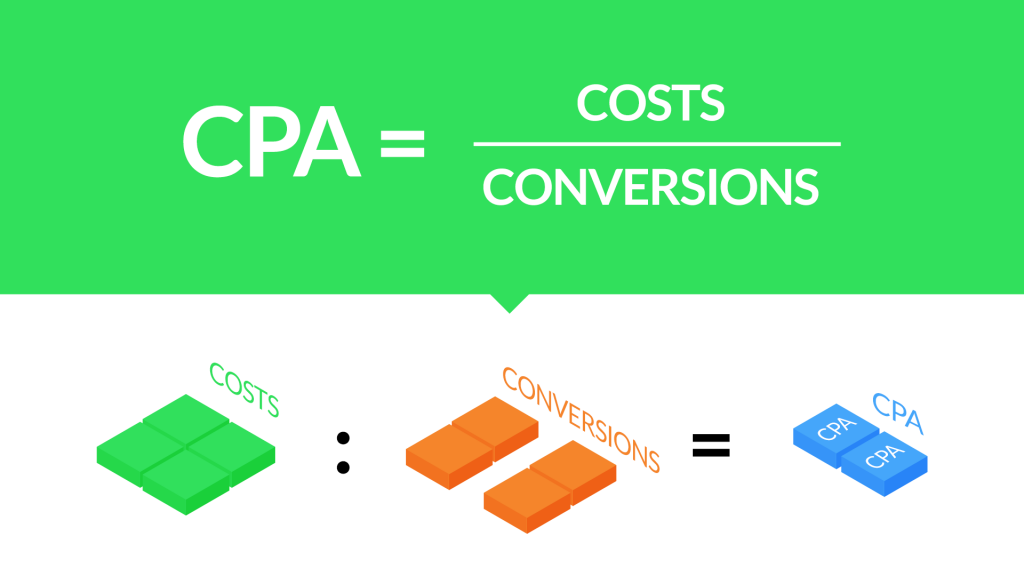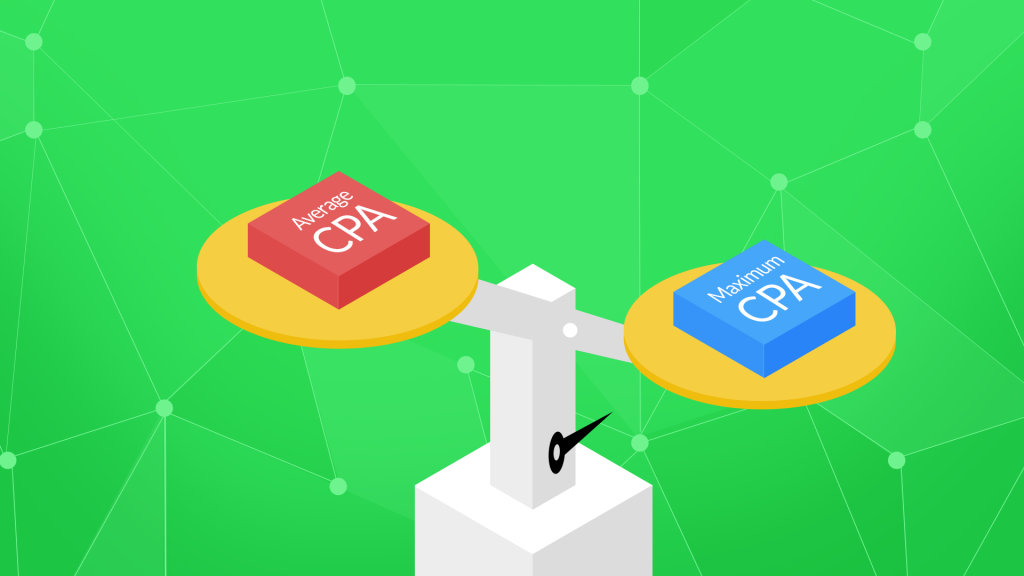Subscribe to join thousands of other ecommerce experts

Online Marketers often have to optimize their performance in favor of Cost per Acquisition (CPA). In this post we will show you the difference between a Maximum CPA (Max CPA) and an Average CPA.
Tl;dr:
- Marketers often need to work with a fixed budget which they have to spend and get the maximum out of it
- The CPA is calculated as: CPA = Costs / Conversions
- Save budget by using the Max CPA Method (an incremental method)
The reason why Online Marketers need to cast an eye on the CPA is that they often need to achieve the maximum sales-performance within a fixed budget. In this case, the KPI of choice – and thus to optimize – is CPA (Cost per Acquisition).
Let’s have a look at the basics of Cost per Acquisition.
Table of Contents
The CPA Basics
The CPA is calculated as:
The total cost of Shopping Campaigns will be divided by the number of conversions of the individual campaigns. To be more precise: This results in an overall AVERAGE CPA of your campaigns, but different campaigns (and products) will contribute to this aggregation very unequally. This is really important to understand, because later in this post you will see the difference to a Maximum CPA Approach for optimizing your campaigns.
Back to the basics: If your current Average CPA is above your Target CPA (meaning the amount you are willing to spend for a conversion), you usually would lower the bids as fast as possible to meet your constraint (meeting the Target CPA).
But is this really useful and best practice?
A Quick And Easy Example
Let’s look at the performance of these two campaigns, covering the same products:
- Campaign A is using a Max CPA Approach of $ 5.50 per conversion on product level and gets 2,000 conversions
- Campaign B is using an Average CPA Approach of $ 5.50 per conversion on campaign level and gets 2,001 conversions
Both campaigns have to meet the constraint of a Target CPA of $5.50, meaning that you do not want to spend more than $ 5.50 per conversion. Campaign A has 2000 conversions and campaign B 2001 conversions. Now the interesting question is: what do we mean with “we do not want to spend more than $ 5.50 per conversion? So let’s have look at the statistics of both campaigns for answering that question:
The Max CPA Campaign is optimized considering a maximum of $5.50 for a conversion calculated for every single product. You get 2,000 conversions for costs of $10,000 and your average CPA is $ 5.00.
Example B, which uses the Average CPA Method with $ 5.50 on campaign level, will also not exceed your defined limit, but the overall Average CPA of $5.25 is slightly higher than in example A.
What does this mean? At the first glance, both examples lead to a positive result. You will even have some space for investing more of your budget because both results are still under your limit of spending $5.50 per conversion. But does it really make sense? And what is the difference?
Because of the optimization in example B, you gained one additional conversion. But: the total costs also increased by $500 compared to example A.
Long story short: one additional conversion just cost you an whooping $500 on top! If you would have used the Max CPA Approach on a product level you would have saved the $500 bucks, because the Maximum CPA limit of $5.50 calculated with an incremental approach helps to avoid things like that.
So, the question you really have to answer is: does the aggregation of performance data really is a good match to judge if you are on track and meet your goals? Mostly, you do not want to spend an amount which is 100 times larger than your maximum willingness to pay for a conversion. Presumably, you do not even want to spend an amount twice or three-times as large as your maximum willingness to pay for a conversion.
If you have the choice to optimize your campaigns on a more granular level and you can apply an incremental approach (by using Max CPA) you should do that. If you decide to not use this approach you really should take a look at your unit economics.
But what if your budget has to be spend anyways and nobody cares about the efficiency?
Here are some tips for tackling this challenge and to surprise your boss:
- Try to combine budgets and allocate them wisely to different channels with more efficient CPAs
- Try out some new channels with the saved budget and invest it in there
- Try to redesignate budget and set other goals for it (eg. Branding, Engagement, …)
- Be clear and transparent while reporting and show the distribution of conversions and costs, maybe also reporting with an incremental approach
Profitability Or Widening Your Reach?
Let’s sum it up:
Exhausting your budget, can result in a wider reach at the expense of profitability. Looking for profitability it is the best way to optimize your campaign on a product level with a Max-CPA-Approach. If you have a manageable number of products, MAX CPA optimization on a product level is achievable. But if you have a product line of several thousand products, you can’t leave out automation.
Do not forget, this concept of incremental judgement also applies for ROAS-based Goals.
You Should Use the Max CPA!
We at smec with conquer this situation in the following way: With our software solution we are able to set MaxCPA strategy to handle every product individually. You can set an individual MaxCPA for any category, brand, product or custom label. Be smart and save your budget! If you are working for a customer and he is complaining that you did not utilize exhaust his budget, just show him our small example above and use the tips we provided.
If you are curious about which current strategies dominate Google Ads and Performance Max, read our recent blog article where we decoded data from over 3000 PMax retail campaigns. Spoiler alert: Dominance of Target ROAS and less usage of Target CPA.




